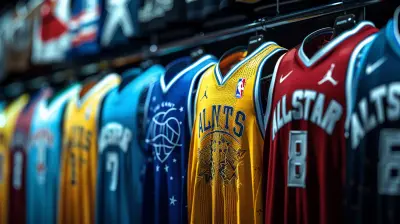How to Choose the Perfect Skateboard for Your Style
9 August 2025
Skateboarding isn’t just a sport—it’s an art, a lifestyle, and a form of self-expression. Whether you're a beginner or a seasoned skater, choosing the right skateboard is crucial for your performance and overall experience. But with so many options out there, how do you find the perfect one for your style?
Well, you've come to the right place! In this guide, we’ll break down everything you need to know—without all the complicated jargon.
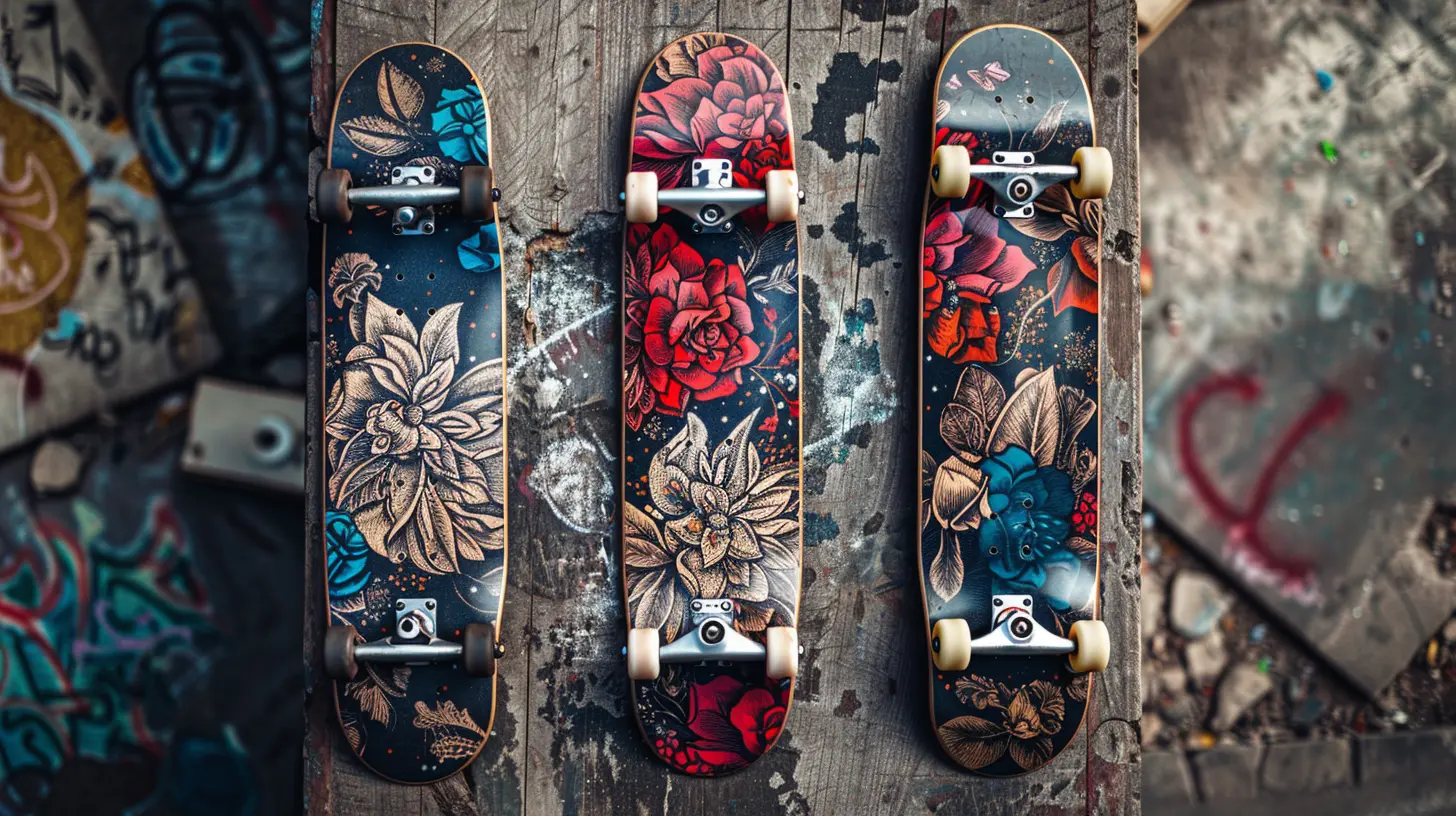
Understanding Skateboard Styles
Before picking a board, you need to figure out your skateboarding style. Are you into cruising down the streets, performing technical tricks, or shredding at the skatepark? Let’s break it down:1. Street Skating
This style is all about tricks—flips, grinds, and ollies on rails, ledges, and stairs. If you love hitting the streets and performing technical moves, you need a skateboard that allows for agility and precision.Best board: A short, lightweight skateboard with a narrow deck (7.5” – 8.25”) will give you better control for tricks.
2. Vert (Ramp) Skating
If you're drawn to halfpipes, skateparks, or massive ramps, vert skating is your style. This requires a stable board that offers good control at high speeds.Best board: A wider deck (8.25” – 8.75”) gives more stability when riding transitions and landing big airs.
3. Cruising & Carving
Not into tricks? Just want to glide smoothly around town? Cruising and carving offer a laid-back riding experience, ideal for transportation and longboarding enthusiasts.Best board: A longboard or cruiser with soft wheels and a wider deck will provide a smoother, more comfortable ride.
4. Downhill Skateboarding
Adrenaline junkies who love speed and bombing hills fall into this category. Downhill skating requires a board that offers maximum stability at high speeds.Best board: A longboard with a stiff deck, low center of gravity, and large wheels is ideal for maintaining control while flying downhill.
5. Freestyle/Dance Skating
This style is all about creativity—longboard dancing, board spins, and stylish footwork. Skaters in this category need a board that offers enough space to perform tricks.Best board: A longboard with a symmetrical shape and kicktails enables better control and fluid movement.
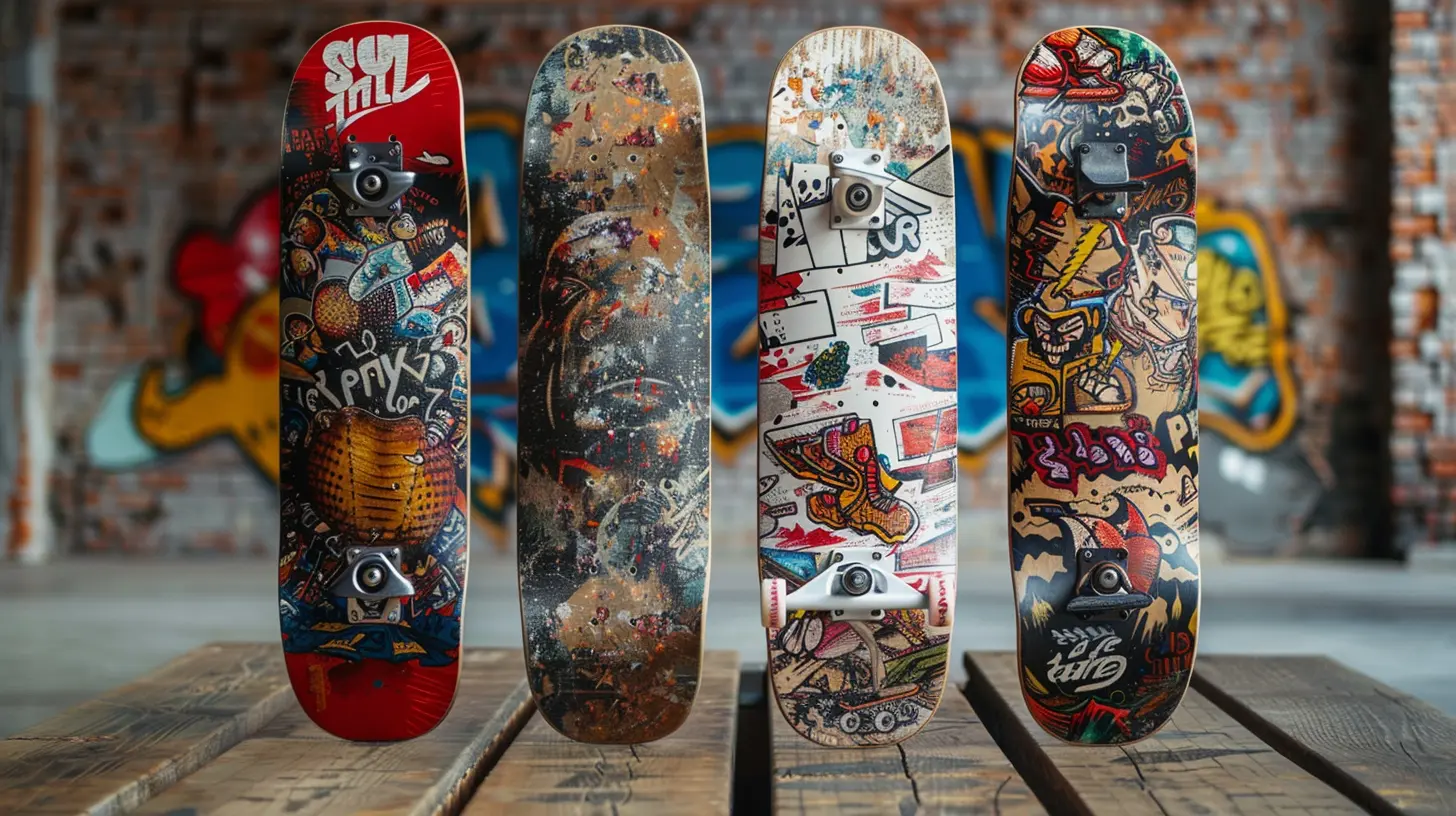
Choosing the Right Skateboard Components
Now that you’ve identified your style, let’s break down the essential parts of a skateboard and how they affect performance.1. Deck Size and Shape
The deck is the wooden board you stand on, and its size and shape determine how well it suits your skating style.- Width: Narrow decks (7.5” – 8.25”) are better for tricks, while wider decks (8.25” – 9”) provide stability for ramps and downhill skating.
- Shape: Standard street decks have a symmetrical shape, while cruisers and longboards have directional shapes designed for smooth rides.
2. Trucks
Trucks are the metal parts that connect the wheels to the deck and allow you to turn.- Width: Match the width of your trucks to your deck.
- Height: Lower trucks offer better stability for tricks, while higher trucks allow for smoother turns, especially useful in cruising and carving.
3. Wheels
Wheels affect how your skateboard rides on different surfaces.- Hardness (Durometer):
- Soft wheels (78A – 87A) are great for rough surfaces and cruising.
- Medium-hard wheels (88A – 97A) work well for all-around street and park skating.
- Hard wheels (98A – 101A) are best for smooth surfaces and technical tricks.
- Diameter:
- Smaller wheels (50mm – 54mm) are great for street skating.
- Larger wheels (55mm – 75mm) are ideal for cruising, downhill, and vert skating.
4. Bearings
Bearings determine how smoothly and fast your wheels spin. They are rated on the ABEC scale (higher ratings mean smoother, faster spins). For regular skating, ABEC-5 or ABEC-7 bearings are a solid choice.5. Grip Tape
Grip tape helps keep your feet firmly planted on the deck. If you’re into tricks, go for a rougher grip. For cruising or longboarding, a slightly smoother grip will work fine.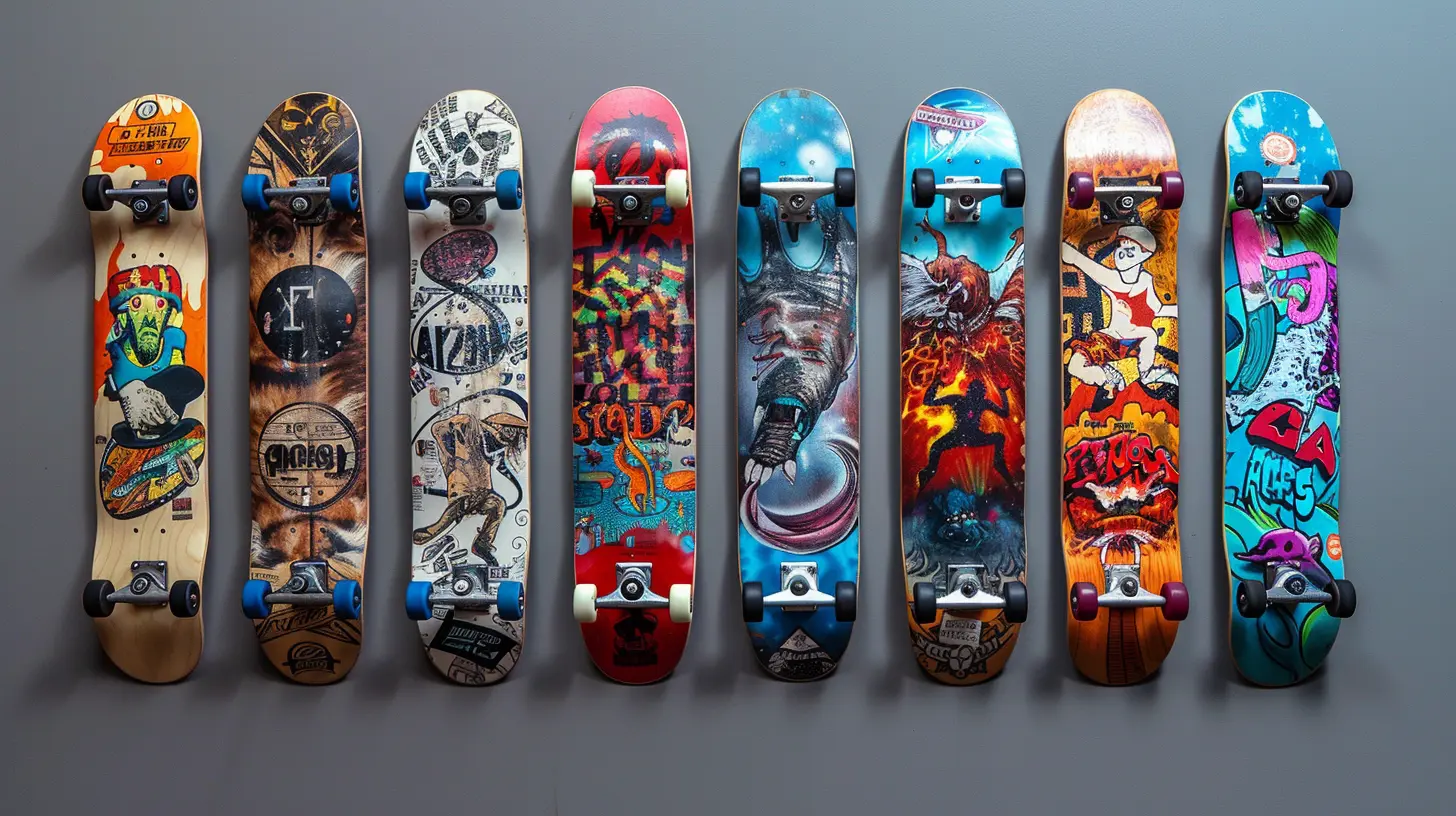
Choosing a Complete Skateboard vs. Custom Setup
Now that you know the basics, should you buy a complete skateboard or build a custom setup?- Complete Skateboard: Perfect for beginners. It comes pre-assembled and ready to ride, saving you the hassle of picking different components.
- Custom Setup: Ideal for experienced skaters who want a board tailored to their specific needs. You can mix and match decks, trucks, wheels, and bearings.
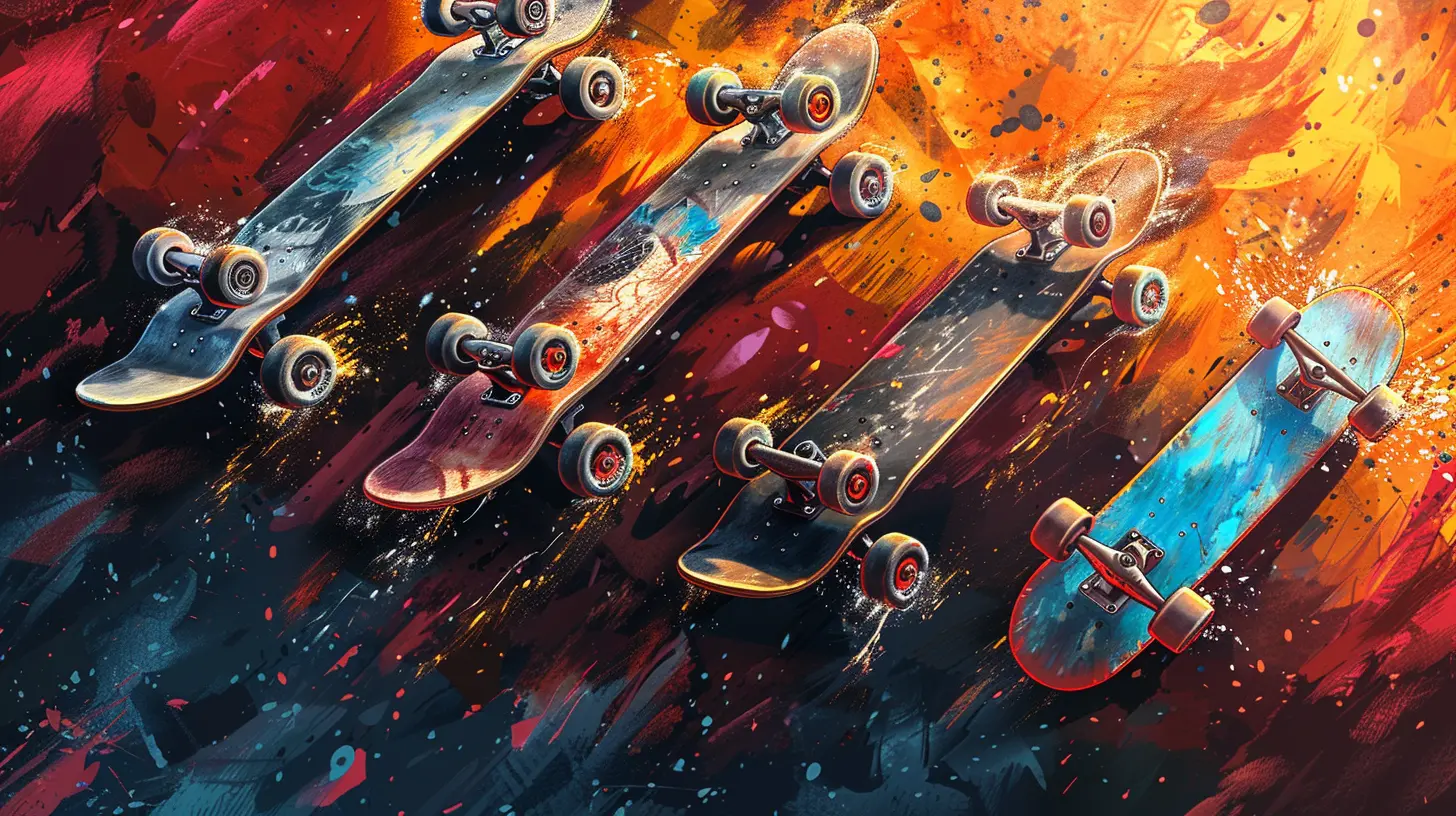
Budget Considerations
Skateboards vary in price depending on quality and brand. Here’s a general breakdown:- Budget Setups ($50 – $100): Good for casual riders or kids who are just testing the waters.
- Mid-Range ($100 – $200): Best for serious skaters who want a durable, high-quality setup.
- High-End ($200+): Professional-grade boards with top-notch materials for advanced riders.
If you're just starting, it’s okay to go for a budget-friendly option, but investing in a decent-quality board will make a difference in performance and durability.
Additional Tips for Choosing the Perfect Skateboard
- Try Before You Buy: If possible, visit a skate shop and stand on different boards to see what feels comfortable.- Consider Your Shoe Size: Bigger feet may require a wider deck for better stability.
- Think About Terrain: If you mainly skate on rough streets, opt for softer wheels to handle cracks better.
- Personal Preference Matters: At the end of the day, your skateboard should feel right for you—don’t just buy what’s trendy.
Final Thoughts
Choosing the right skateboard isn’t rocket science, but it does take a little thought. Start by identifying your skating style, then pick the right deck size, trucks, wheels, and bearings to match your needs. Whether you're hitting the streets, cruising through the city, or bombing hills, the perfect skateboard will enhance your riding experience and help you progress faster.So, ready to find your perfect board? Get out there and start shredding!
all images in this post were generated using AI tools
Category:
SkateboardingAuthor:

Uziel Franco
Discussion
rate this article
1 comments
William Garcia
Choosing a skateboard is like dating; find one that fits your style, or you'll just crash!
August 23, 2025 at 11:13 AM

Uziel Franco
That's a clever analogy! Just like in dating, finding the right skateboard enhances the experience and ensures you enjoy the ride without any bumps!

